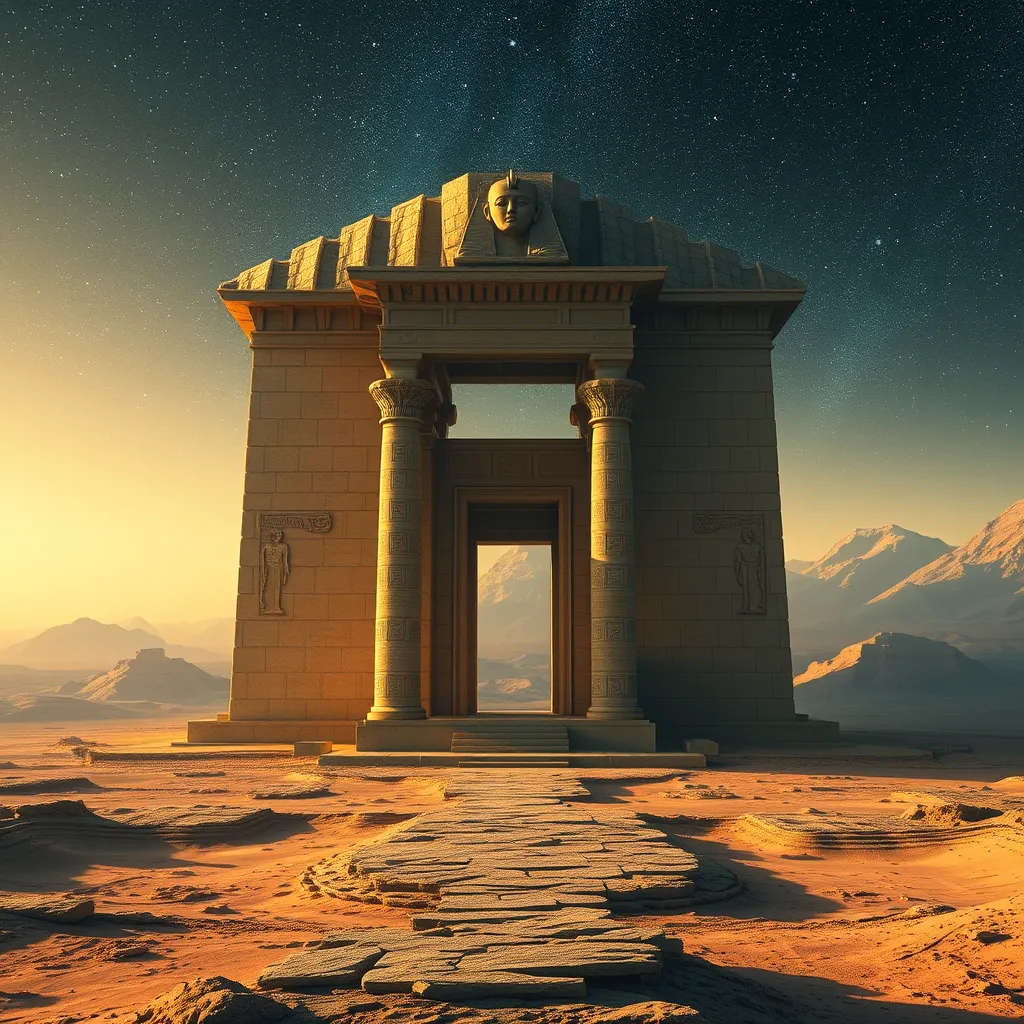The Duat: A Journey Through Time and Space
I. Introduction to the Duat
The Duat, a significant concept in ancient Egyptian mythology, represents the realm of the dead and the journey of the soul after death. It is not merely a destination but a complex landscape that includes various realms and experiences. Understanding the Duat is crucial for comprehending the broader framework of ancient Egyptian beliefs about the afterlife, which was central to their culture and religion.
The afterlife in ancient Egyptian thought was a journey filled with trials, rewards, and transformations. The Duat serves as both the setting for this journey and a reflection of the Egyptians’ understanding of life, death, and rebirth. This article aims to explore the meaning and implications of the Duat, delving into its historical context, structure, themes, and its influence on other cultures.
II. Historical Context of the Duat
The origins of the Duat can be traced back to the early stages of ancient Egyptian religion, where it was initially a shadowy underworld. Over time, the beliefs surrounding the Duat evolved, influenced by changing religious practices and societal needs. From the Pyramid Texts to the later Coffin Texts, the Duat transformed into a more defined realm populated by various deities and spirits.
Key texts that provide insight into the Duat include:
- The Pyramid Texts: The oldest religious texts in the world, written to guide the deceased through the afterlife.
- The Coffin Texts: A collection of spells intended to protect and guide the deceased, expanding on the concepts introduced in the Pyramid Texts.
- The Book of the Dead: A compilation of spells and illustrations that served as a guide for the deceased navigating the Duat.
III. The Structure of the Duat
The Duat is often depicted as a vast, multi-layered landscape with various realms. Each area within the Duat has its own unique characteristics, contributing to the overall narrative of the afterlife journey. Some key features include:
- The Field of Reeds: A paradise where the righteous could live in bliss, reminiscent of their earthly lives.
- The Lake of Fire: A place of punishment for the wicked, symbolizing chaos and destruction.
- The Hall of Judgment: The central location where souls are weighed against the feather of Ma’at to determine their fate.
The duality of the Duat is crucial; it serves as both a place of judgment and reward, reflecting the moral choices made during one’s lifetime. The journey through the Duat is not solely about reaching a final destination but about the experiences and trials encountered along the way.
IV. The Journey Through the Duat
In navigating the Duat, the deceased plays an active role in their journey, often accompanied by deities who guide and protect them. Key figures in this journey include:
- Anubis: The god of embalming and the guide of souls, responsible for leading the deceased through the Duat.
- Osiris: The god of the afterlife and resurrection, presiding over the judgment of souls.
- Thoth: The god of wisdom, who records the results of the weighing of the heart ceremony.
A significant aspect of this journey is the weighing of the heart ceremony, where the heart of the deceased is weighed against the feather of Ma’at, representing truth and justice. This ceremony determines whether the soul is deemed worthy to enter the Field of Reeds or faces annihilation by the devouring monster Ammit.
V. Symbolism and Themes in the Duat
The Duat is rich with symbolism, reflecting deep themes of death and rebirth. The journey through the Duat is often seen as a metaphor for life’s struggles and the hope for renewal. Key themes include:
- Death and Rebirth: The cyclical nature of life, where death is not an end but a transition to another state of existence.
- Time and Space: The Duat transcends earthly time and space, representing a realm where different dimensions of existence converge.
- Chaos and Order: The constant battle between chaos (symbolized by the monsters and dangers of the Duat) and order (represented by the gods and the principles of Ma’at).
VI. The Duat in Art and Literature
The Duat has been depicted in various forms of ancient Egyptian art, particularly in tomb paintings where scenes of the afterlife journey are illustrated. These artworks serve as both a guide and a means of ensuring the deceased’s successful navigation through the Duat.
Literature also plays a vital role in understanding the Duat. The Book of the Dead is perhaps the most famous text, containing spells and illustrations designed to assist the deceased. Modern interpretations of the Duat often explore its themes and narratives, influencing popular culture in films, literature, and art.
VII. The Duat’s Influence on Other Cultures
The concept of the Duat has parallels in various other cultures’ afterlife beliefs. For instance:
- The Greek Underworld: Similar to the Duat, the Greek underworld features realms for the righteous and the wicked.
- The Norse Hel: A realm where those who did not die in battle reside, reflecting a duality of reward and punishment.
- Eastern Philosophies: Concepts of reincarnation and spiritual journeys can be compared to the experiences within the Duat.
The enduring legacy of the Duat continues to resonate in contemporary spirituality and religious practices, emphasizing the universal themes of life, death, and the afterlife.
VIII. Conclusion
In summary, the Duat is not just a mythological concept but a profound reflection of ancient Egyptian beliefs about the afterlife. Its intricate structure, rich symbolism, and the journey it represents offer invaluable insights into the human condition and our quest for understanding life beyond death.
Understanding the Duat and its implications allows us to appreciate the significance of ancient beliefs and their influence on modern thought. As we explore Egyptian mythology further, we uncover timeless teachings that continue to inspire and provoke curiosity in our collective journey through time and space.




